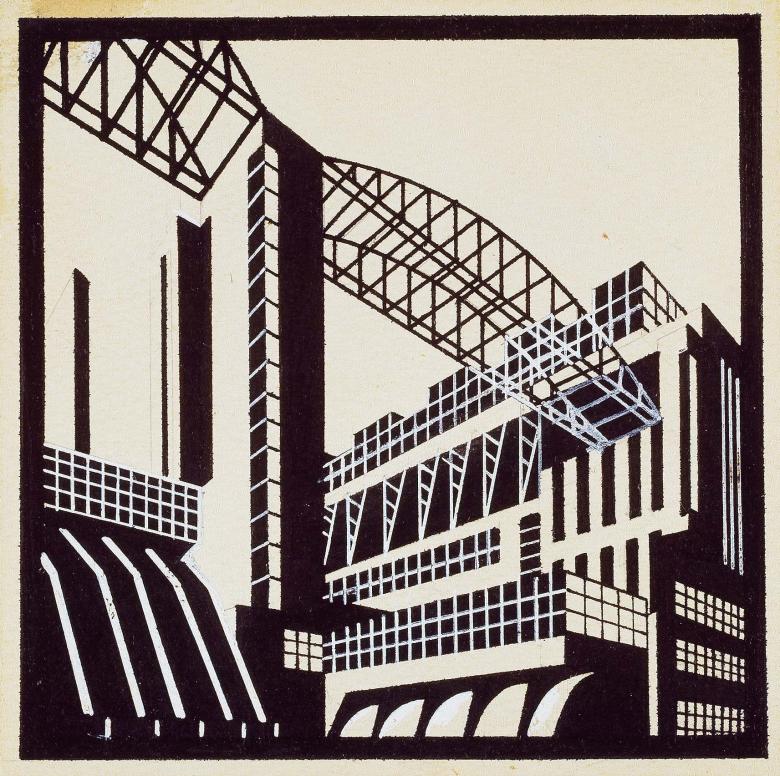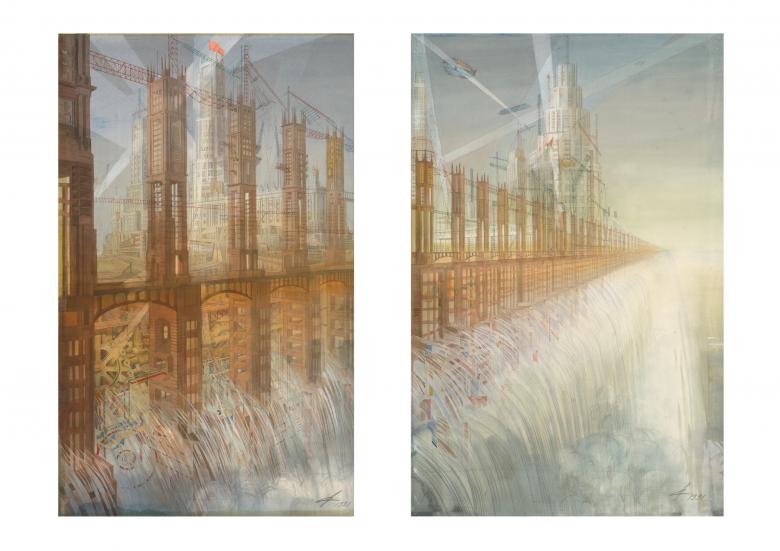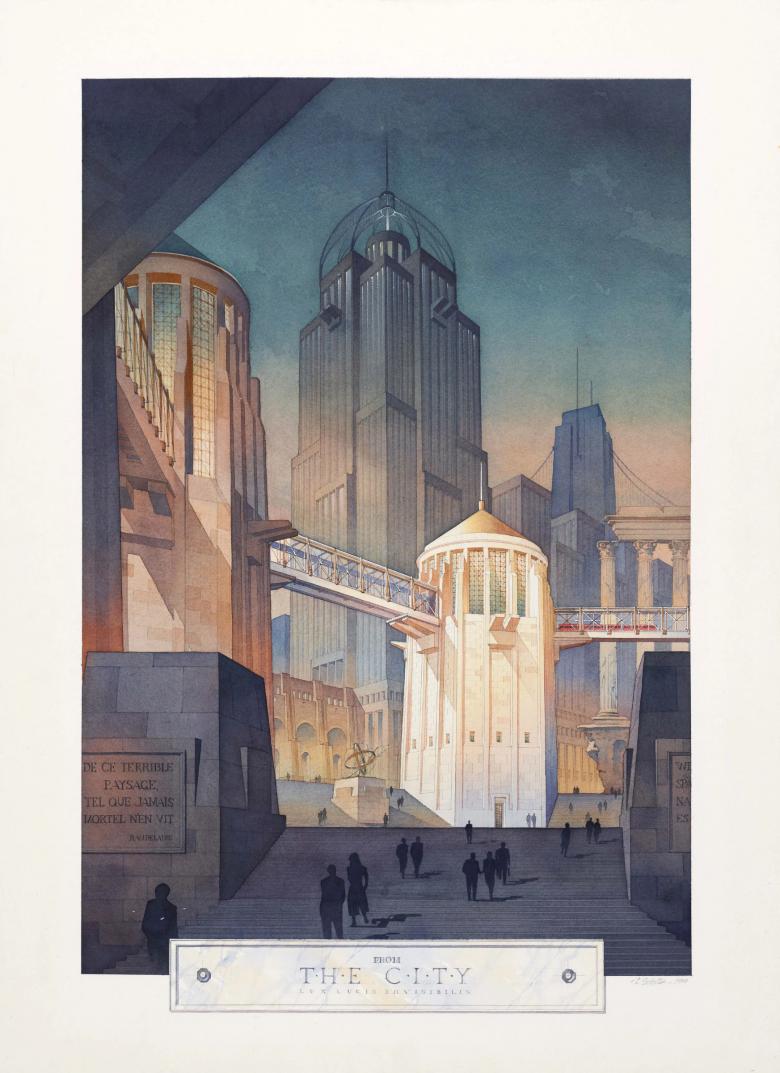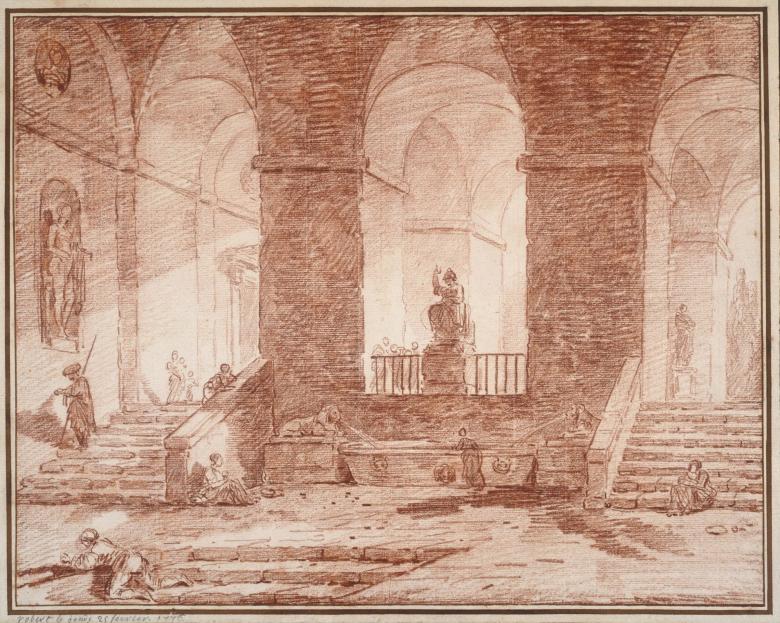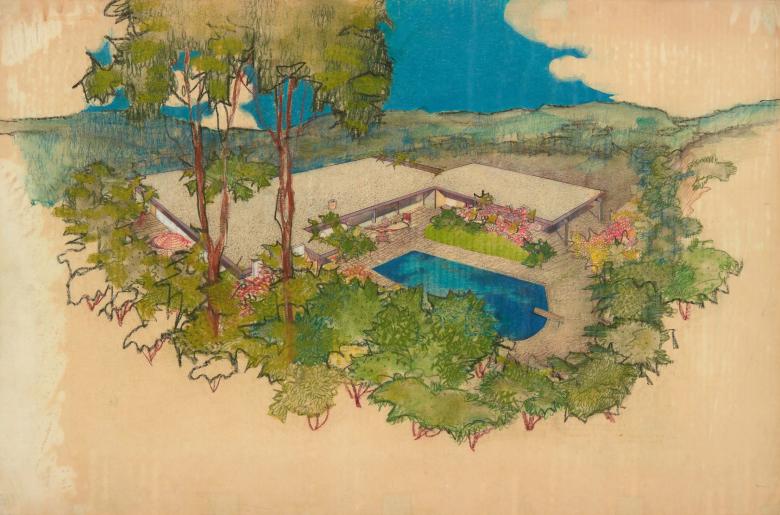10th Anniversary of the Museum for Architectural Drawing in Berlin
Thinking With a Pencil
Falk Jaeger
29. de juny 2023
Jakow Tschernichow (1889-1951), Architectural Fantasy: View of a power station, 1920s-early 1930s. Drawing pen, ink, opaque white, 104 × 104 mm (Image: Sergei Tchoban Collection, inv. no. D0145)
The Tchoban Foundation's Museum for Architectural Drawing has become a must-visit for architects and architecture enthusiasts from around the world when visiting Berlin, just like the neighboring Aedes Architecture Forum. The exhibition ArchiVision is celebrating the museum's tenth anniversary until early September.
Located in the former Pfefferberg Brewery complex, in direct proximity to the international Aedes Architecture Forum and Olafur Eliasson's studio, Sergei Tchoban, an architect born and trained in Saint Petersburg and partner with Tchoban Voss Architekten, built a museum for his collection. It is the only specialized museum for architectural drawing in the world. Tchoban himself is one of the most significant architectural draftsmen, with his own exhibitions in Germany and abroad. He acts as a patron, impresario, and curator for this artistic discipline, which has lost its significance as an applied art in building practice due to the advent of digital design tools and is now regarded solely within the realm of fine arts. He has contributed the majority of his collection of significant drawings spanning six centuries, with a focus on the 17th and 18th centuries, as well as Russian Constructivists from the 1920s, to the foundation bearing his name.
The distinctive museum building, composed of four dancing cubes, is constructed from beige-colored concrete, resembling finely carved sandstone. The surfaces are adorned with facade reliefs, with their motifs originating from the first drawing that Tchoban collected, a sheet by Pietro di Gonzaga from the early 19th century. Thus, the purpose of the building is evident from the outside, as it embodies a narrative architecture.
Michail Filippow (*1954), Hydroelectric Power Station, 1991. Watercolor, ink, chalk; 2 sheets each measuring 945 × 575 mm (Image: Tchoban Foundation Collection, Inv. No. TF1051 © Michail Filippow)
Thomas W. Schaller (*1959), From the City. Architectural Fantasy, 1990. Watercolor, pencil, opaque white; 670 × 445 mm (Image: Tchoban Foundation Collection, inv. no. TF0837 © Thomas W. Schaller)
The exhibition spaces, spread over two floors, are not extensive. They accommodate around 70 exhibits, making it suitable for small-scale exhibitions that encourage contemplative viewing of the mostly very delicate drawings. In times dominated by overwhelming mega-exhibitions, it is refreshing to focus on the quiet qualities of the wonderful selected artworks in a manageable exhibition.
Tchoban has established an international network and, through his own exhibitions in St. Petersburg, Moscow, Paris, London, Milan, Rome, and Beijing, laid the foundation for mutual exchange. In return, strict requirements regarding security, climatic and conservational conditions must be met for guest exhibitions.
The world's oldest architectural museum, the Sir John Soane’s Museum in London, made a grand entrance with the opening exhibition: Piranesi's Paestum: Master Drawings Uncovered. The exhibition showcased rare hand drawings by the artist, who is known for his famous copper engravings of the Imaginary Prisons and Views of Rome, for which he usually only made preliminary sketches. The École des Beaux-Arts in Paris exhibited designs of Hôtels particuliers published by Jean Mariette, while the Albertina in Vienna showcased Architectural Master Drawings by artists ranging from Bernini and Johann Bernhard Fischer von Erlach to Hans Hollein and Zaha Hadid.
Tchoban made use of his connections in Russia to collaborate with the Tretyakov Gallery in Moscow and the Hermitage in St. Petersburg. At times, Russian partners and clients from Tchoban's Moscow office also acted as sponsors. However, these connections have been severed since the COVID-19 pandemic and the Ukraine conflict.
Hubert Robert (1733–1808) Architectural Fantasy. Interior view of a palace, 1776. red chalk; 357 × 439 mm (Image: Sergei Tchoban Collection, inv. no. T0101)
Richard Neutra (1892–1970), Design for the Hammerman House in Bel Air, California, 1954. Pastel, wax crayon, pencil. 608 × 915 mm (Image: Sergei Tchoban Collection, inv. no. T0717 © The Neutra Institute for Survival Through Design)
However, with the potential of his own collection and of the artworks he has incorporated into the foundation, as well as with partners around the world, the museum is not dependent on these connections. Thus, in addition to collaborations, the museum has been producing its own exhibitions on individual architects such as Hans Poelzig and Alvaro Siza, James Wines (SITE) and Boris Iofan, Thom Mayne and Aldo Rossi, as well as on topics such as AKIRA, the first Japanese animated film, Mark Fisher's rock concert shows, Russian avant-garde, and German film architecture from 1918-33.
The anniversary exhibition is something of a best-of, a compilation spanning centuries, organized into five different thematic complexes (Initial Sketches, Towers of Fantasy, Visionary Urban and Living Environments, Architectural Utopias, and World Theater). It is undoubtedly one of the most fascinating and entertaining exhibitions to date. Moreover, it showcases the entire range of genres, graphic techniques, and representational possibilities that architectural artists have employed over five centuries to express their architectural thinking.
Exhibition: June 2 – September 3, 2023
Venue: Tchoban Foundation, Christinenstrasse 18A, 10119 Berlin
Opening hours: Mon–Fri 2pm–7pm, Sat/Sun 1pm–5pm
The article was originally published as “Denken mit dem Zeichenstift” on German-Architects. Translation by Bianca Murphy.
Articles relacionats
-
Worlds of Space and Color
1/3/24
-
Thinking With a Pencil
29/6/23
-
All in the Siza Family
27/2/19
